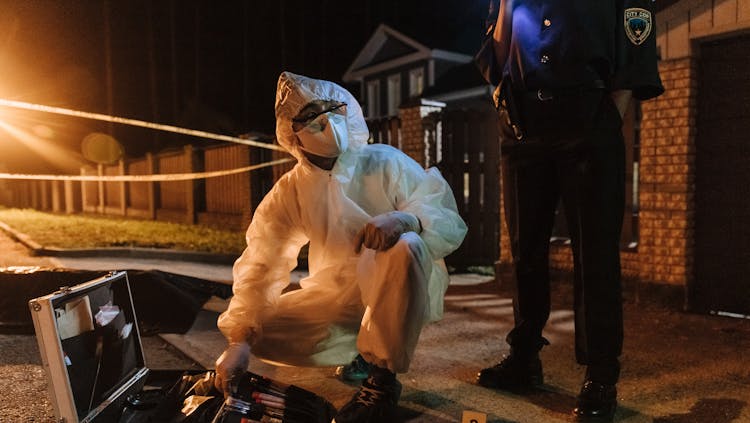Did you know that, according to FBI data, the first quarter of 2024 experienced a sustained decrease in violent crime and murder rates in the United States? The FBI published figures showing a 15% decline in overall reported violent crimes.
It is important to know the difference between manslaughter and murder when it comes to the law. While both involve the unlawful killing of another person, the intent and circumstances make them different. But what’s the difference between manslaughter and murder?
Manslaughter is killing someone without bad intentions, like in the heat of the moment or because of careless behavior. In murder, the goal is to murder or seriously harm someone, and it is usually planned ahead of time.
Learn more about the details that set them apart and the complications that occur in determining the appropriate charges based on the evidence presented.
Manslaughter vs. Murder: Understanding the Basics
Differentiating manslaughter from murder can be challenging, but you must understand the key distinctions in the legal field. Manslaughter typically involves the unlawful killing of another person without the element of premeditation or intent to kill. It’s often seen as a crime of passion or recklessness, while the intentional and premeditated killing of another person characterizes murder.
In manslaughter cases, the absence of malice aforethought is a factor that sets it apart from murder. This means that while the act may have resulted in someone’s death, there was no prior intention to cause harm. This distinction determines the appropriate charges and potential penalties in a court of law.
Manslaughter can be classified into different categories, such as voluntary and involuntary manslaughter, each with its own set of circumstances and legal implications.
Elements of Manslaughter
The key elements of manslaughter typically involve the absence of malice aforethought, which is a central aspect that separates it from murder.
One of the primary elements of manslaughter is the presence of reckless or negligent behavior on the part of the accused. This means that the individual acted in a way that created a high risk of harm or death, even if they didn’t specifically intend to cause harm. Manslaughter often involves a lack of intent to cause serious bodily harm or death, further differentiating it from murder.
Another type of manslaughter is voluntary manslaughter, where the perpetrator acts in the heat of passion or under extreme emotional distress, leading to a fatal outcome. So, what is the sentence for voluntary manslaughter? Sentences for voluntary manslaughter can range from 3 to 15 years, but they can be longer depending on aggravating factors or specific state laws. These elements collectively define the crime of manslaughter and are significant in legal proceedings and judgments.
Elements of Murder
To comprehend the distinctive nature of murder, focus on the key elements that define this grave crime. Unlike manslaughter, murder involves specific elements that elevate it to a more severe offense.
Another element of the establishment of murder is that of premeditation. Premeditation refers to the planning and conscious decision to commit an act that results in someone else’s death. This component stresses the calculated nature of homicides, their motives, and the profound thinking behind them before they take place.
Murder often involves a level of cruelty or viciousness that distinguishes it from other crimes. The brutality or cruelty demonstrated by the commission of the crime can further solidify the classification of the offense as murder.
Degrees of Murder
When discussing murder, you must consider the varying degrees that exist within this serious crime. The two main degrees of murder recognized in legal systems are first-degree murder and second-degree murder.
First-degree murder carries harsher penalties due to the element of premeditation, which indicates a higher level of culpability. Sentences for first-degree murder can range from life imprisonment to the death penalty in some jurisdictions. Second-degree murder, while still a grave offense, may result in slightly lesser penalties than first-degree murder.
Understand the distinctions between these degrees of murder in legal proceedings, as they help determine the appropriate charges and potential sentences for individuals accused of this crime.
Defenses and Penalties
Defendants in murder cases may employ various legal defenses to challenge the accusations and potentially mitigate the severity of the penalties they face. Some common defenses include self-defense, insanity, duress, and intoxication. Self-defense asserts that the act is necessary to protect oneself or others from harm.
The insanity defense argues that the defendant lacked the mental capacity to understand the consequences of their actions. Duress claims that the defendant was forced to commit the crime under threat of harm. The intoxication defense may reduce the defendant’s guilt if they weren’t in control of their actions due to being under the influence of drugs or alcohol.
Penalties for murder convictions vary depending on the circumstances and jurisdiction. They can range from lengthy prison sentences to life imprisonment without the possibility of parole, or in some cases, the death penalty. Aggravating factors such as premeditation, the use of a deadly weapon, or the victim’s status can result in harsher penalties. Reduced factors, like a lack of criminal history or remorse, may lead to reduced sentences.













